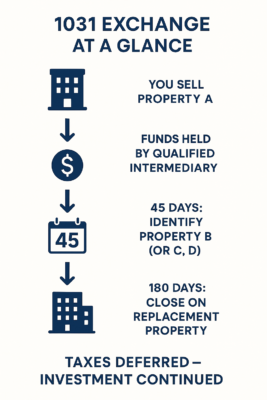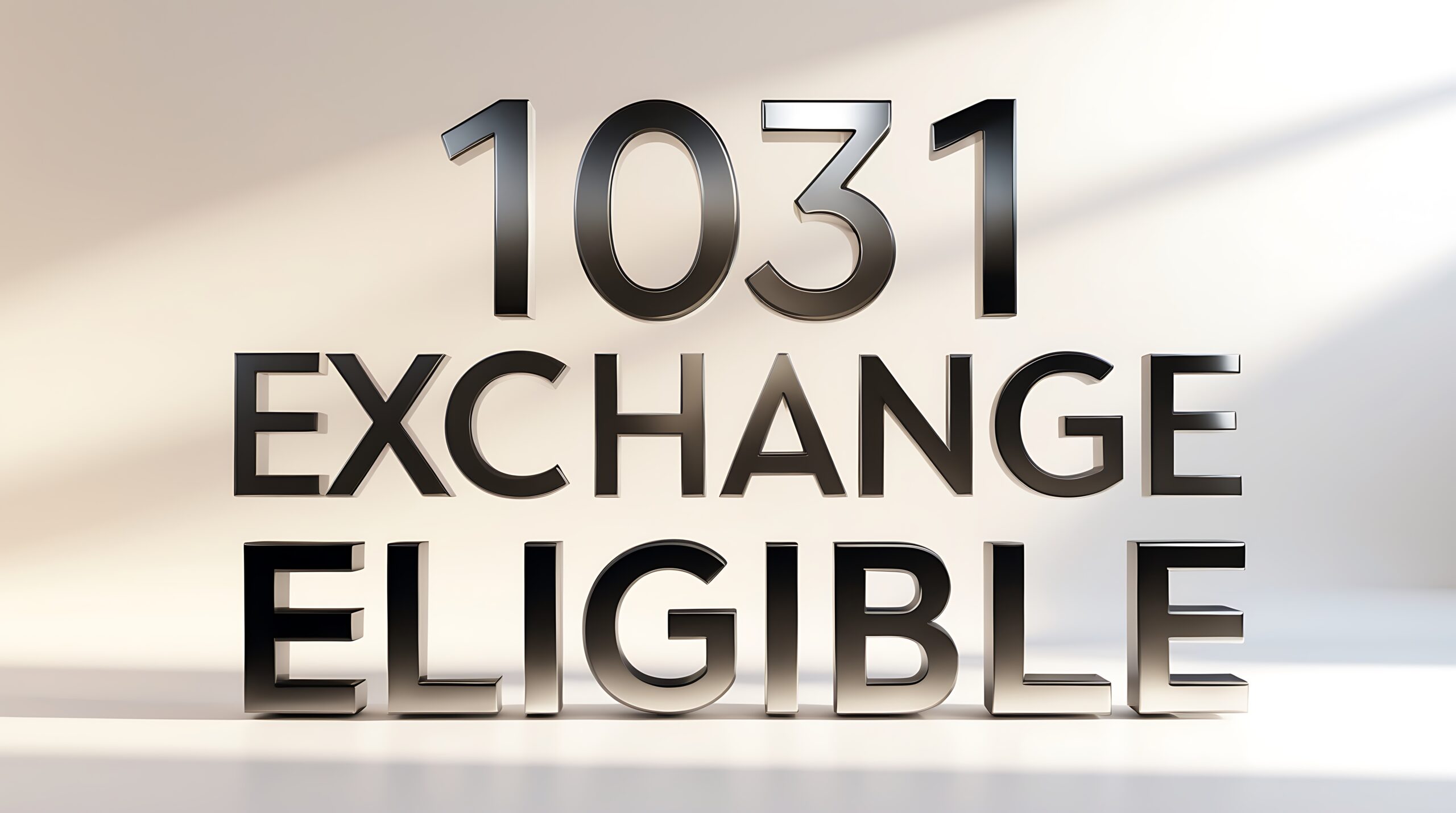1031 Exchange Guide: How to Defer Capital Gains Taxes When Selling Investment Property
🔁 How a 1031 Exchange Works
- Sell Your Investment Property: Close on your rental, commercial property, or land.
- Funds Held by Qualified Intermediary: A QI holds the proceeds—never you directly.
- Identify Replacement Property (45 Days): Formally identify up to 3 like-kind options.
- Close on New Property (180 Days): Complete the purchase to qualify.
- Taxes Deferred: Reinvest full proceeds without capital gains tax (for now).
💼 Benefits of a 1031 Tax Exchange
- ✅ Defer Capital Gains Tax
- ✅ Grow and Scale Your Portfolio
- ✅ Diversify or Consolidate Investments
- ✅ Reallocate to Better Markets
- ✅ Build Long-Term Wealth
🔍 What Qualifies as a “Like-Kind” Exchange?
“Like-kind” is broadly defined. You can exchange nearly any real estate held for investment, such as:
- Residential rentals for commercial buildings
- Vacant land for an apartment complex
- Office space for industrial property
Note: You cannot exchange a personal residence.
📅 1031 Exchange Timeline Flowchart

❓ Frequently Asked Questions
Can I use a 1031 Exchange for my home?
No. It must be for investment or business property.
What happens if I don’t reinvest all proceeds?
Any cash not reinvested (“boot”) is taxable as capital gains.
Can I exchange into multiple properties?
Yes, you can diversify your reinvestment if done correctly.
Can I do this more than once?
Absolutely. Many investors use 1031 Exchanges repeatedly.
📞 Ready to Maximize Your Profits?
If you’re planning to sell an income property, a 1031 Exchange could save you thousands in taxes. Let’s talk about your best strategy.
Tarzell Jones
949.345.1027
[email protected]
DRE #: 02238547


